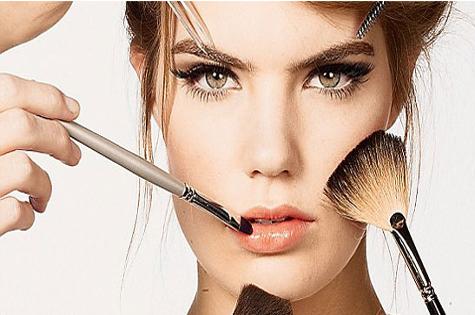With an ever-expanding array of technological tweaks and fixes on offer, the beauty and diet industries have become the subject of significant concerns over the safety of people who choose to undergo these procedures.
We can take as examples the PIP breast implant scandal or the tragic case of Joy Williams, a 24-year-old from the UK who died after travelling to Thailand for cut-price surgery that went wrong. There are also misgivings about the lack of regulation of so-called non-invasive procedures – a recent Department of Health report in England described dermal fillers as a ‘crisis waiting to happen’.
More than this, there is a concern about the extent to which we should engage with such practices. Do we need to wear make-up to work? What is required of us in terms of hair dying and body hair removal? Will youth-mimicking procedures such as Botox become par for the course in future? And what should we be telling our children?
To set this in context, we must think about how make-up has been regarded historically. Until fairly recently, make-up was not permitted for respectable women – it was a sign of prostitution, hence so much talk of cheek-pinching and lip-biting in 19th-century literature – whereas now it is the norm for most women.
Fundraising campaigns such as the ‘no make-up selfie’ initiative are noteworthy precisely because it is such a rare occurrence to see a woman in public without make-up. Over a very short period of time, what is considered normal and required practice in terms of ‘routine maintenance’ has changed dramatically. Younger women in particular now see the removal of body hair as basic grooming – a task as necessary and unremarkable as teeth-brushing. As with make-up and hair dying norms, hair removal is a stark example of the emergence of more demanding norms.
The assumption that a beautiful, more perfect self is a happier, more successful self is deeply ingrained in popular discourse, and the language used is exceptionally value-laden: we are urged to be ‘the best we can be’ and to strive for our ‘best selves’.
We should do this because we’re ‘worth it’ – the implication being that if we don’t, we are culpable and blameworthy for ‘letting ourselves go’. It is here that the concepts of beauty, happiness and success begin to merge, with the assumption that the closer we come to this ideal, the happier and more successful we will become. For this reason, many women – and increasingly men – feel under significant pressure to attain perfection.
These assumptions are problematic for a number of reasons – most obviously that the ideal is unattainable for most of us (and, ultimately, for us all, as we age, wrinkle and sag).
Additionally, the ideal seems to have become more demanding and ubiquitous, requiring a greater range of practices and applying to more types of women and men in more places. As a result, conformity becomes harder to resist and understandings of what is normal and acceptable become narrower.
Given this, it is likely that current ethical approaches – particularly those that rely only on individual choice and consent – are misguided. They fail to take account of the power of the current dominant ideal and its communal nature.
The beauty ideal, and the assumptions which underlie it, are shared, as are the expectations that follow from it. We cannot choose our own beauty ideal – we can only choose to conform to it, embody it, or reject it.
* * *
This article first appeared on the University of Birmingham website.



















__small.png)










